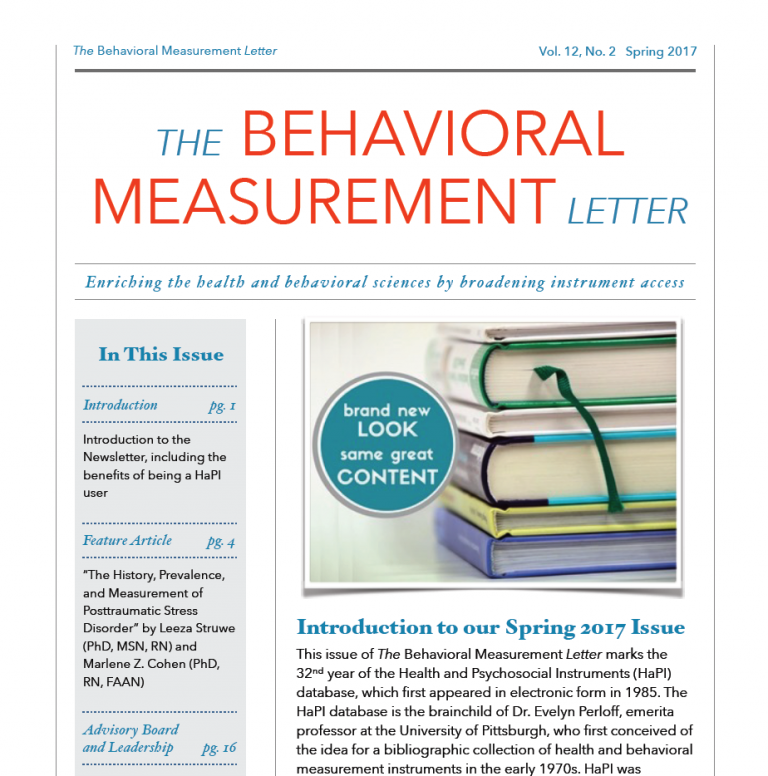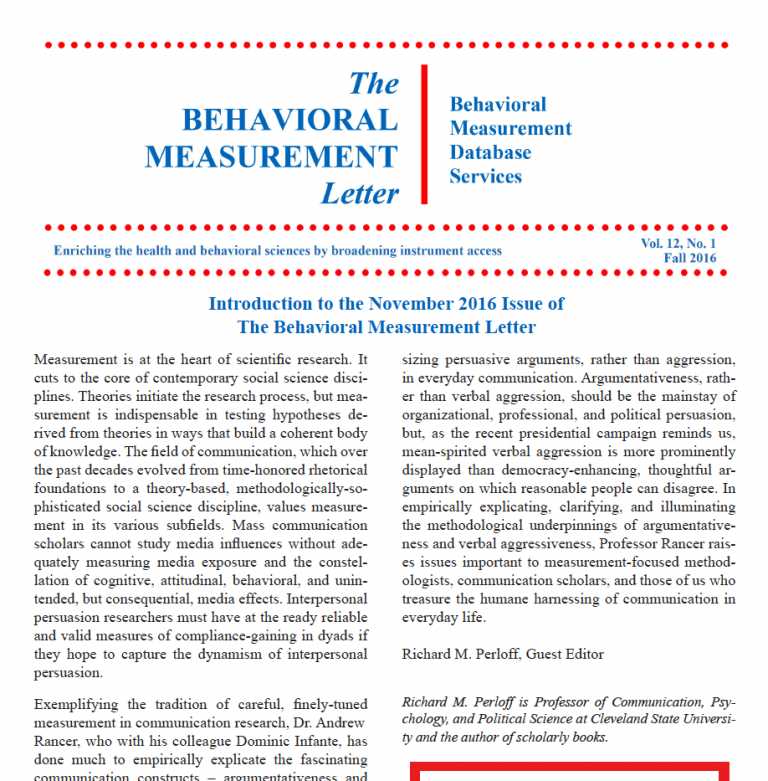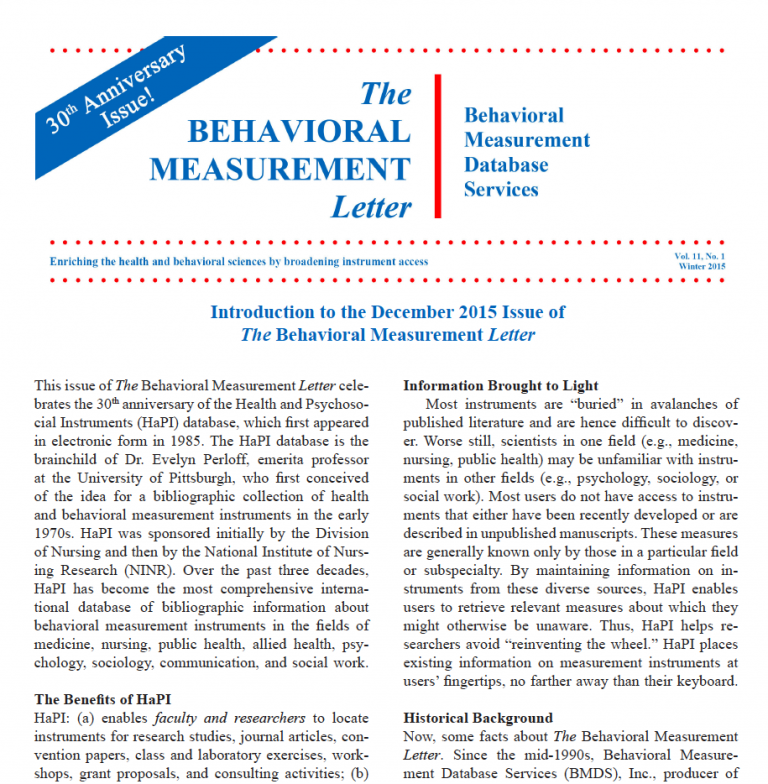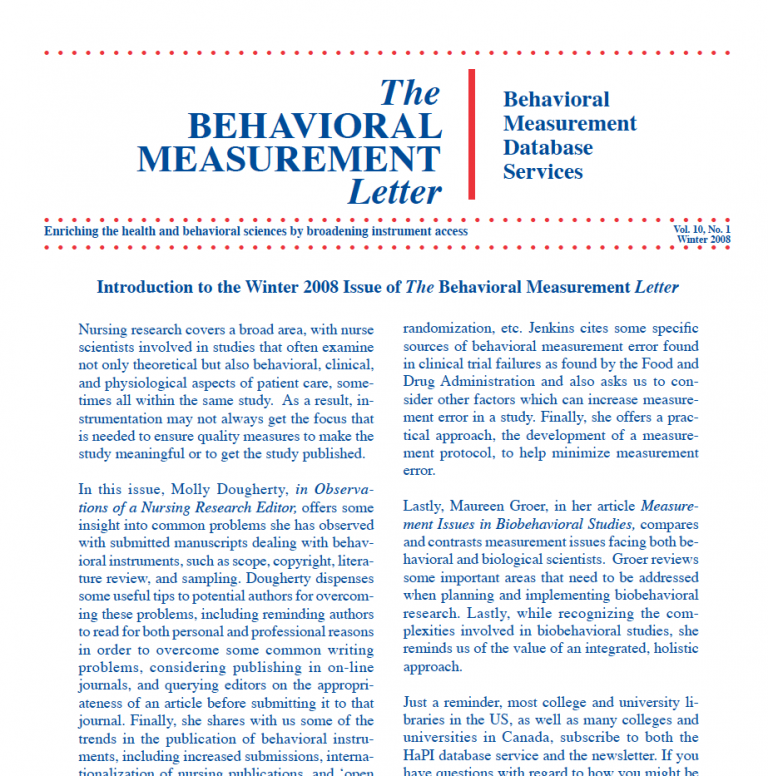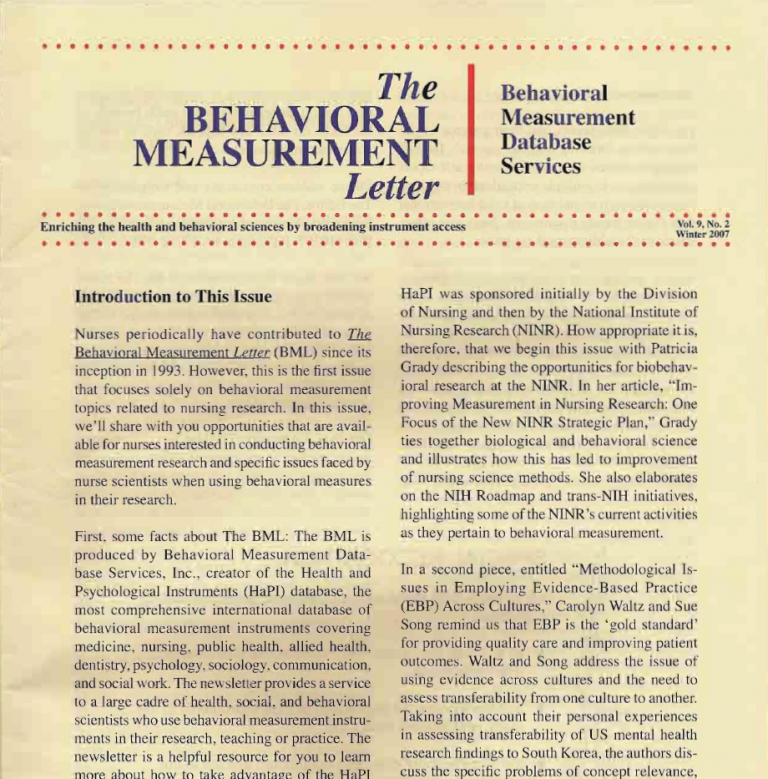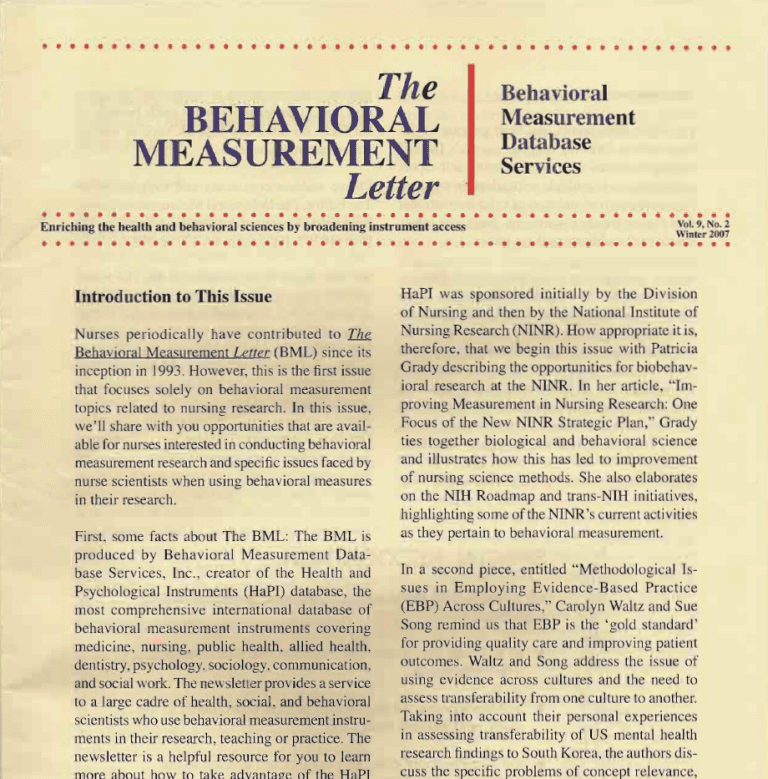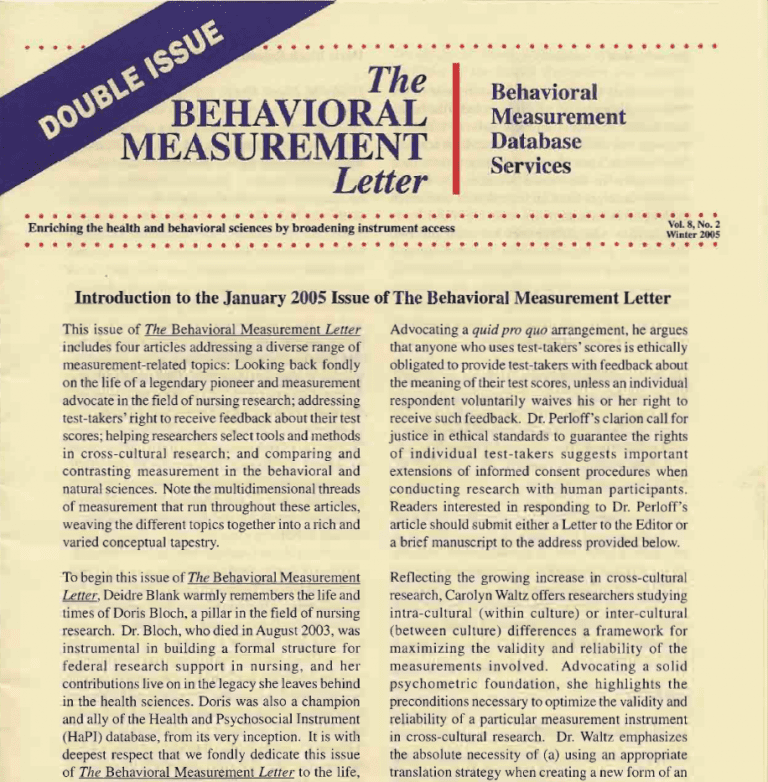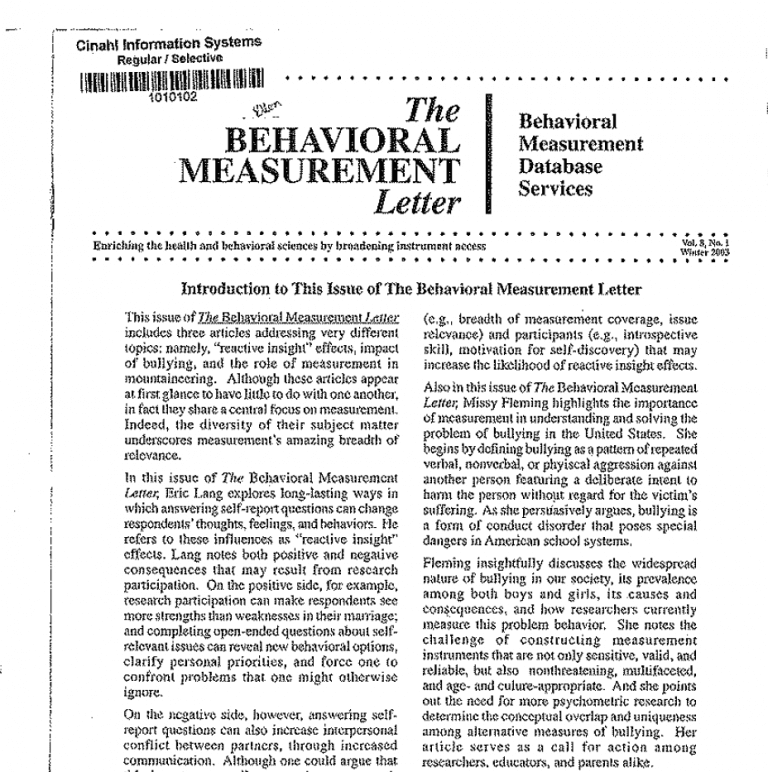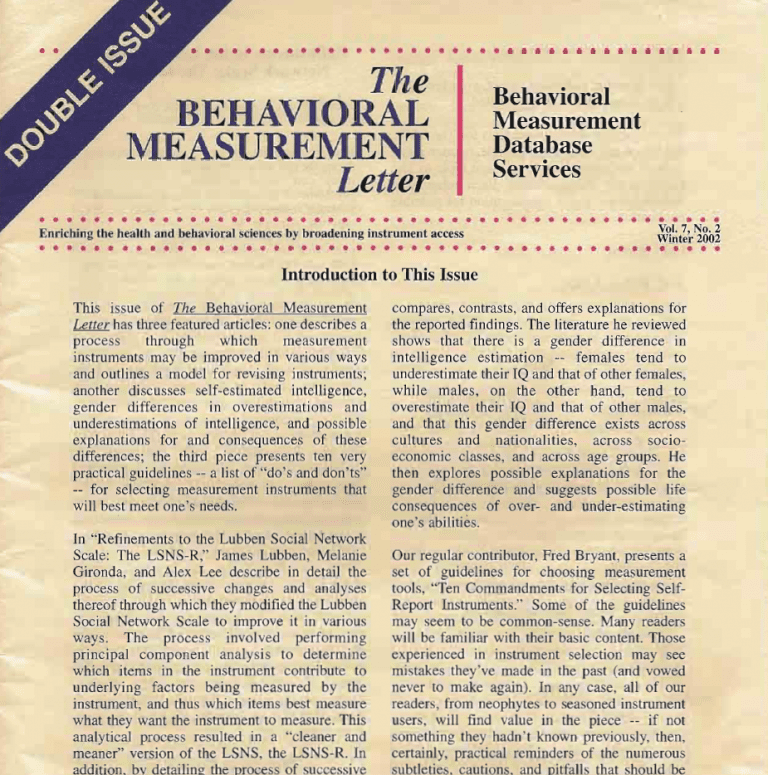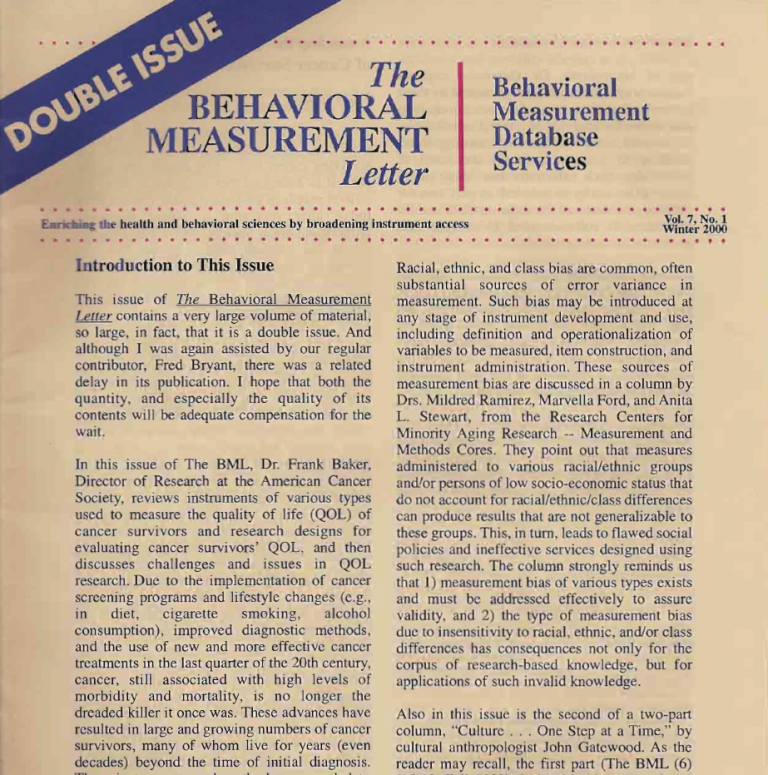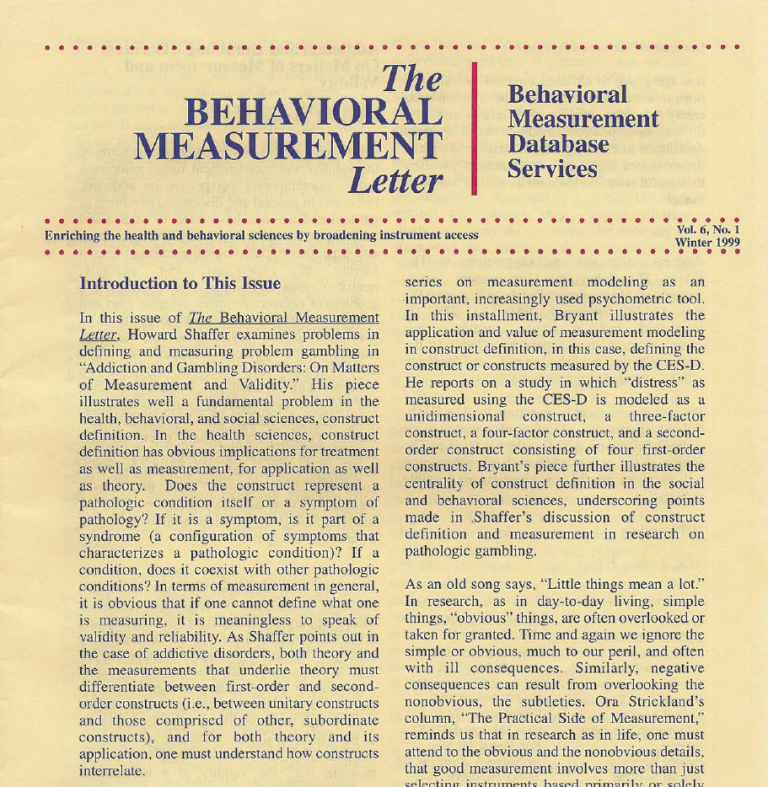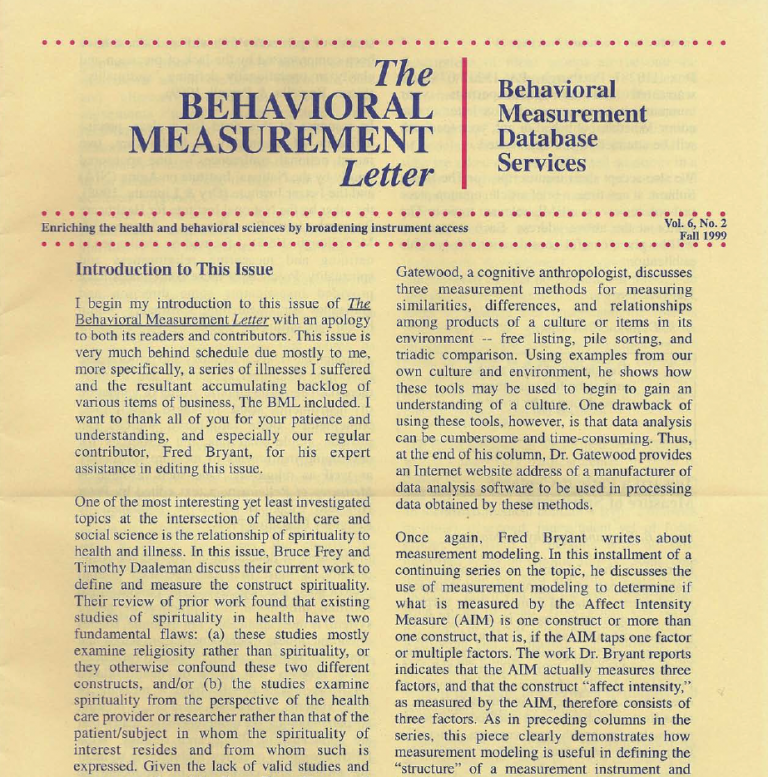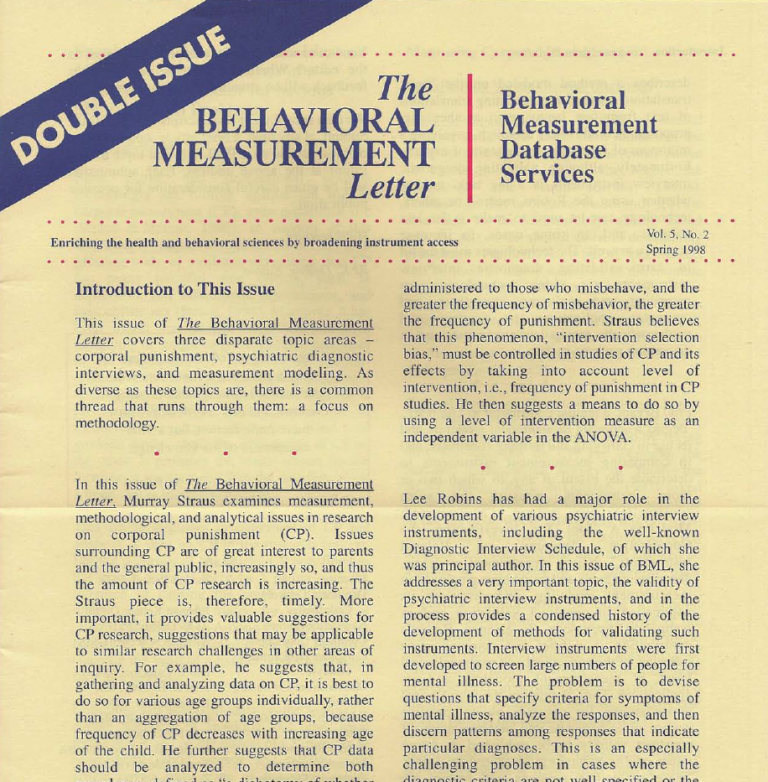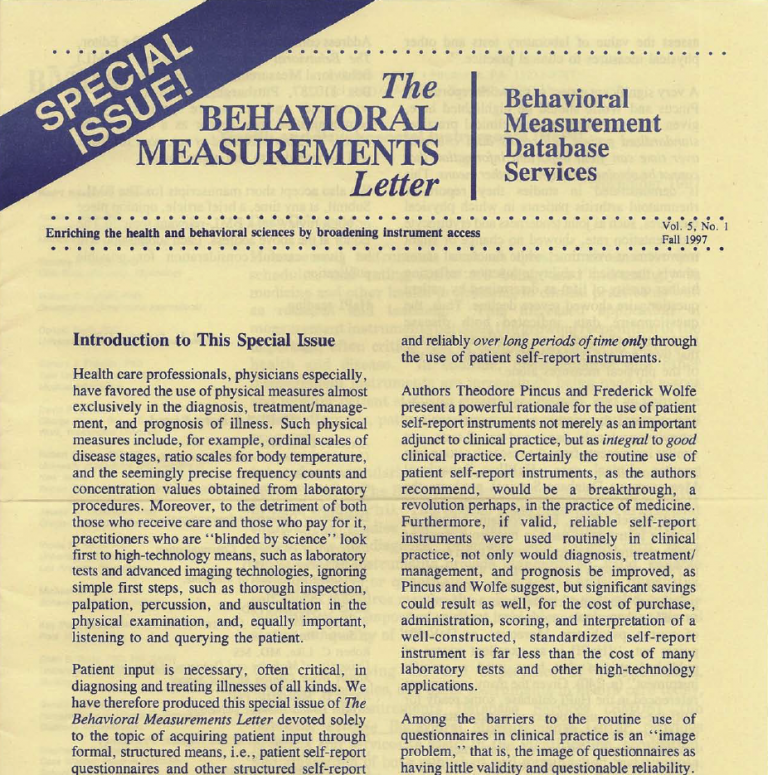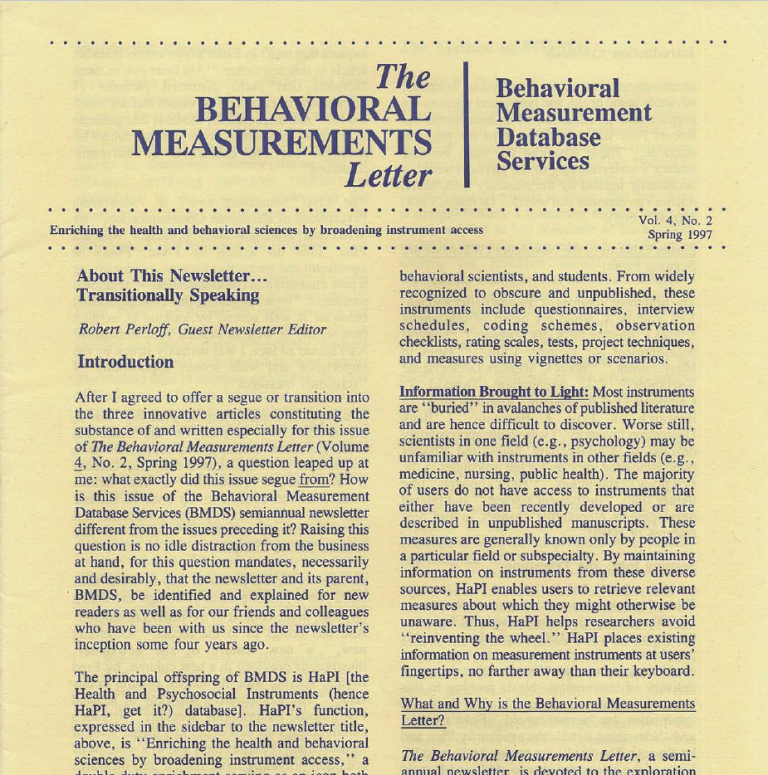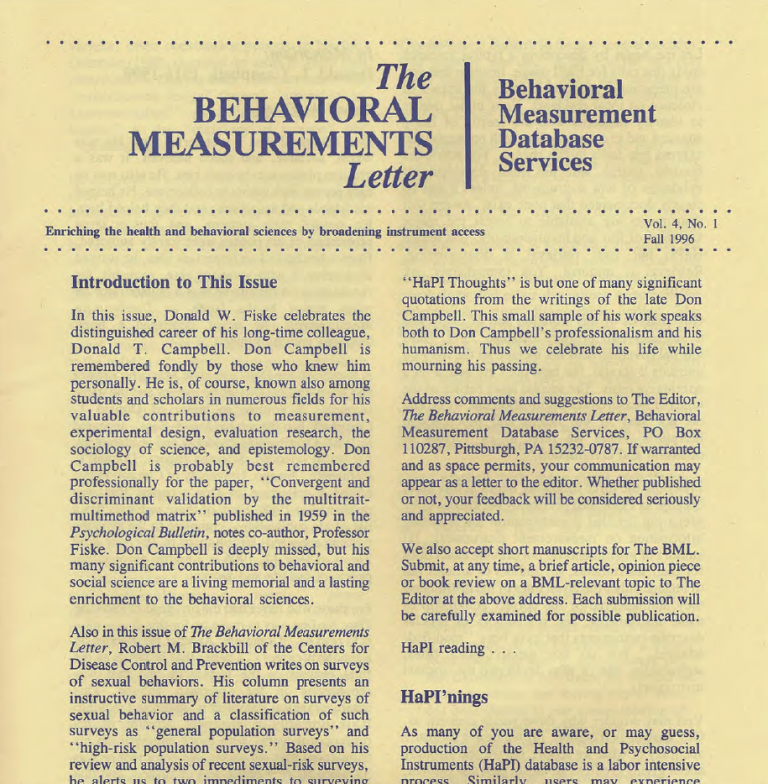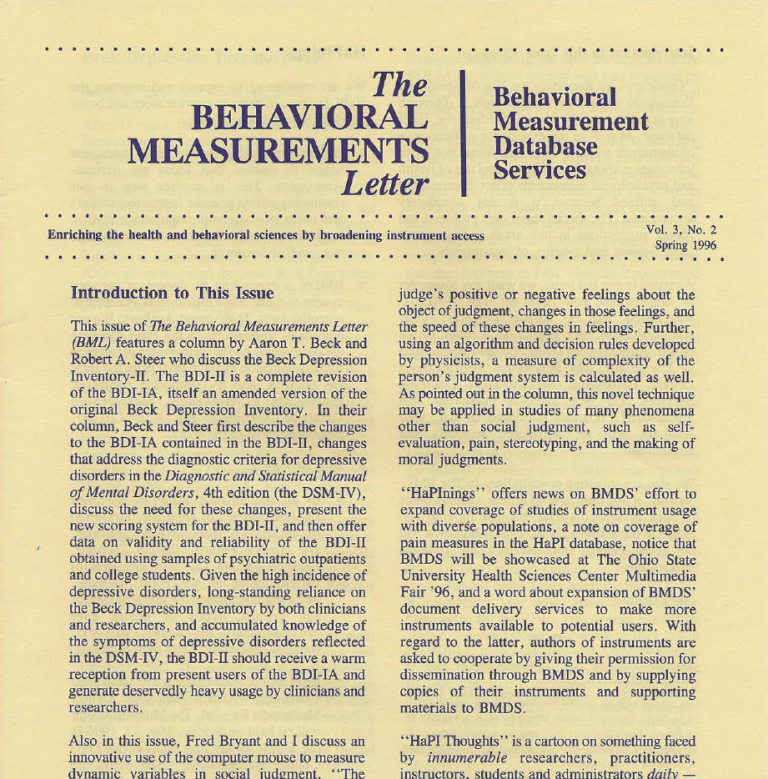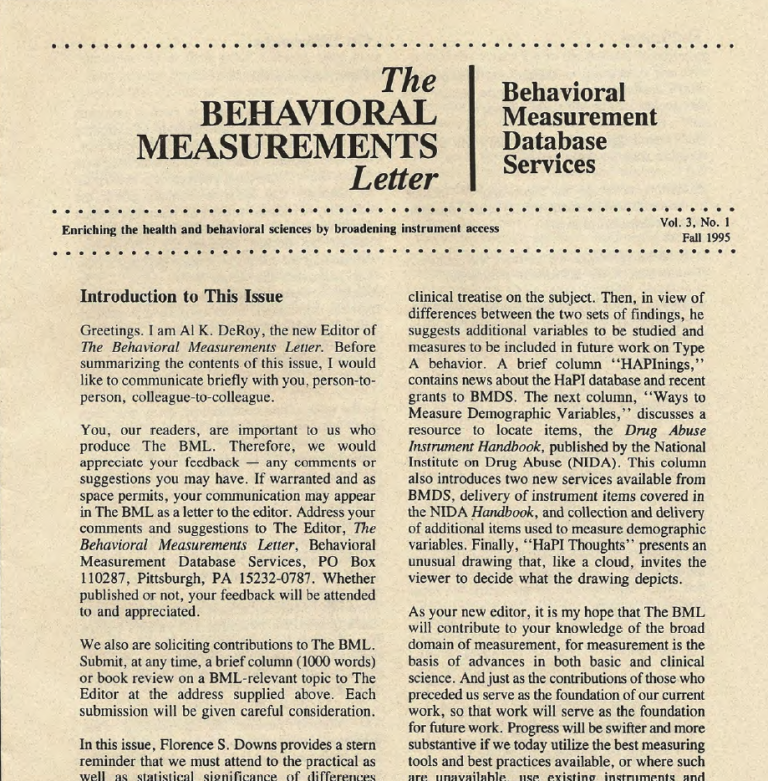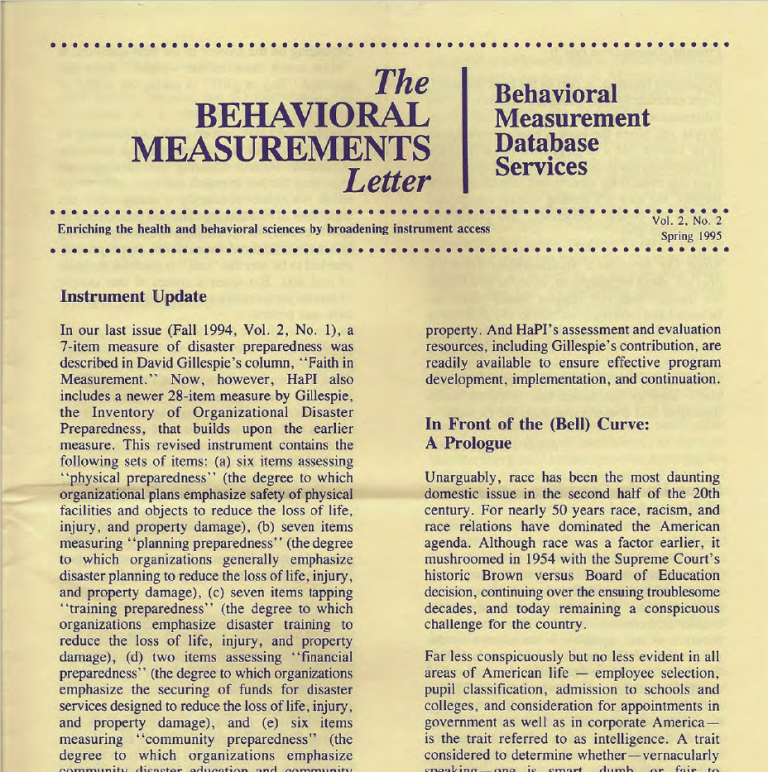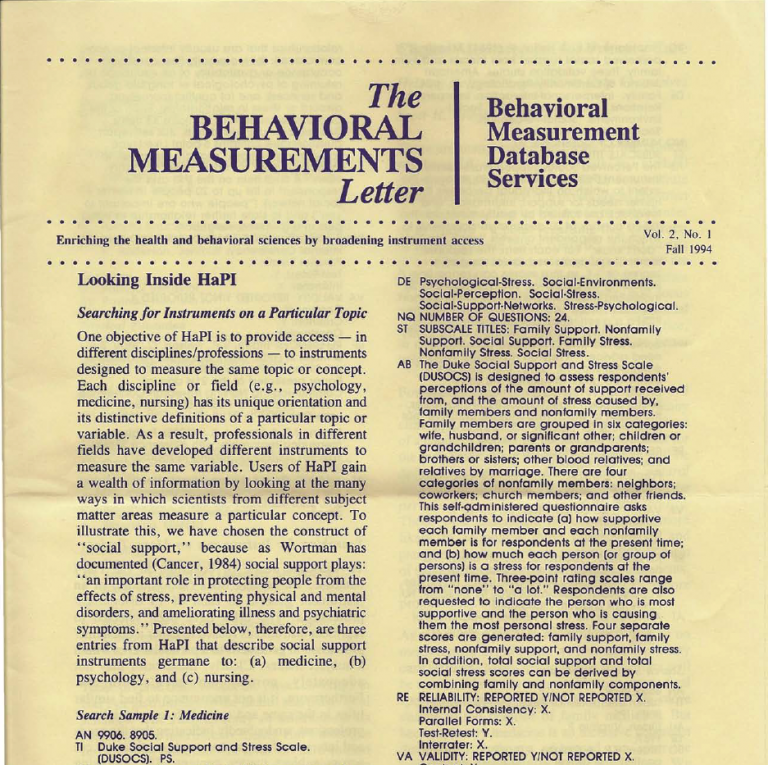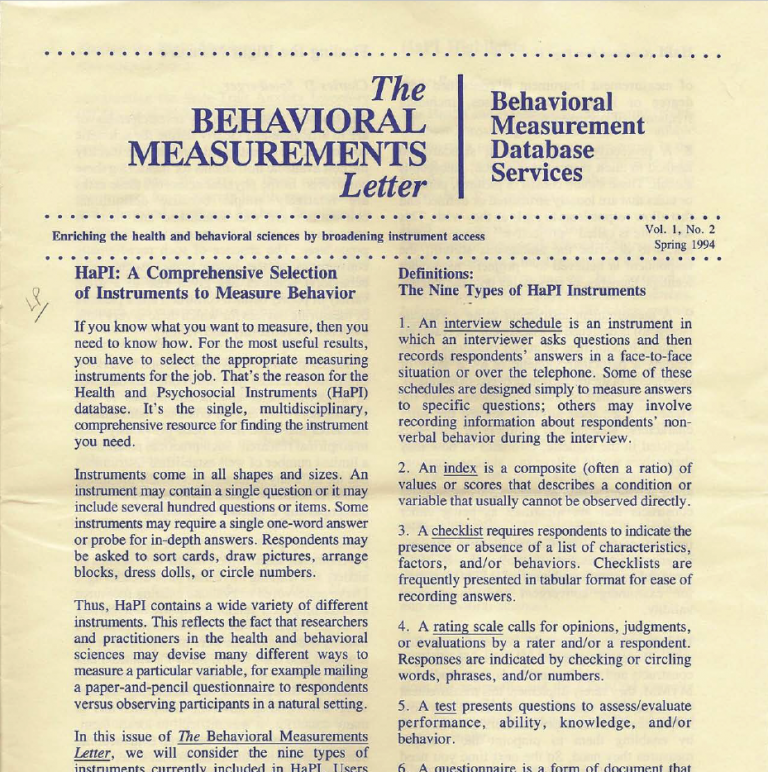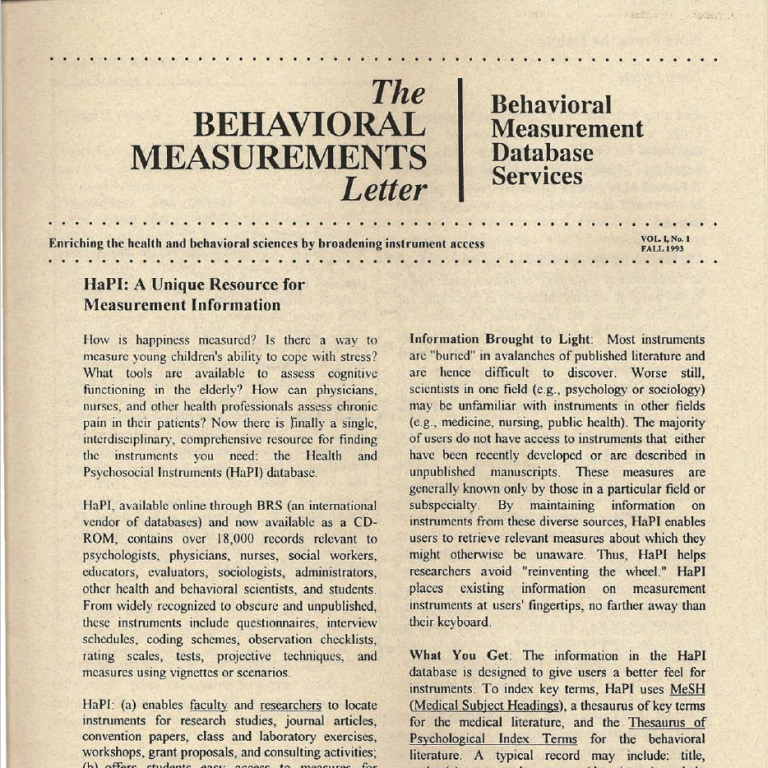Continued article from the The Behavioral Measurement Letter, Vol. 1, No. 2, Spring 1994
Peter Hernon
Librarians participate in the research process by assisting researchers in the conduct of their literature reviews and preparation of grant proposals. In some cases, they might do so as part of a research team, whereas in other instances they address the needs of those requesting information in person, by telephone, or through a mediator (e.g., research assistant or secretary). Libraries are complex organizations where research feeds into accountability, strategic planning, and decision-making. Librarians may participate in projects that cut across both roles. For example, within some of the social sciences, as well as the public and private sectors, there is renewed interest for organizations to ensure a high level of service quality. The Clinton administration has added its voice to the importance of service quality, but does so from the perspective of customers (i.e., those receiving a direct benefit from a service) and not the public at large.
Both service quality and the concept of customers have implications for researchers as well as library managers, especially those in government. The accompanying figure examines service quality from the perspective of customers. What are all the variables that comprise service quality, and how important is one variable in relation to the others? Such questions are starting to capture the attention of researchers and managers who are re examining the roles that libraries will play in the future.
Key concepts in measurement are identifying and defining indicators of the phenomenon to be measured and developing standardized rules that produce numbers representing the indicator of the phenomenon to be measured. The development (and adherence to) standardized rules and procedures should insure the collection of reliable data. However, even if such data are collected they may not be valid. The inability t conceptualize and operationalize complex phenomena in library and information science often forces measurement at the nominal or ordinal levels, or the adaptation of qualitative research designs.
Information Current
- Accuracy
- Comprehensiveness
- Currency or Timeliness
- Packaging: Aesthetics
- Understandability
- Other
Staff Performance
- Ability to identify actual information need
- Accuracy
- Approachability and friendliness: Willingness to return to same staff member
- Speed of delivery
- Other
Customer Expectations Concerning Service Quality
Performance measures represent a broad managerial concept that encompasses both input (indicators of those resources essential to library services) and output (indicators of the services resulting from library activities) measures. Librarians use performance measures to assess the extent, effectiveness, and efficiency of library operations, services, and programs. However, a measure only emphasizes one facet of library activity. Furthermore, there is a need to view performance measures within the context of the above figure. Which measures best reflect each variable, and to what extent can there be standardization within and across libraries?
To compound the problems, decision research should consider the use of different methods of data collection that complement each other and reflect service quality over time. In such a context more problems in library and information science conform to “fourth generation evaluation” which emphasizes case studies and internal validity over external validity. Data gathered as part of a measure tend to be based on observation perception, or self-reporting. One exception to this generalization is the use of unobtrusive testing, or the testing of library staff unaware that they are the subjects, to gauge aspects of staff performance. However, to date, such testing has not been viewed within the context of Figure 1.
How does HaPI fit into the determination of service quality for libraries? Simply stated, HaPI contains data collection instruments that researchers and librarians might find useful in examining different aspects of service quality. HaPI encourages them to look beyond their own literature and to benefit from the research and data collection instruments of others.
“It doesn’t matter how new an idea is: what matters is how new it becomes.”
Elias Canetti
Peter Hernon is Professor, Graduate School of Library and Information Science, Simmons College, Boston. He received his PhD from Indiana University and specializes in government information policy and the application of research to library and information centers. He is the founding editor of Government Information Quarterly and the Executive Editor of the Journal of Academic Librarianship.
Read additional articles from this newsletter:
HaPI: A Comprehensive Selection of Instruments to Measure Behavior
1-2-spring-1994

